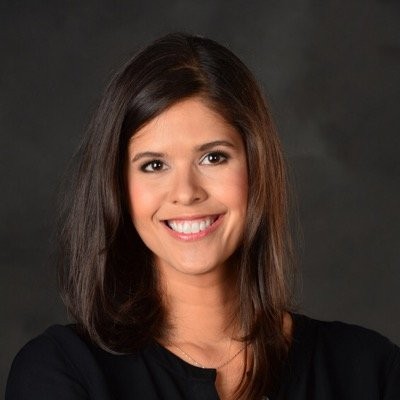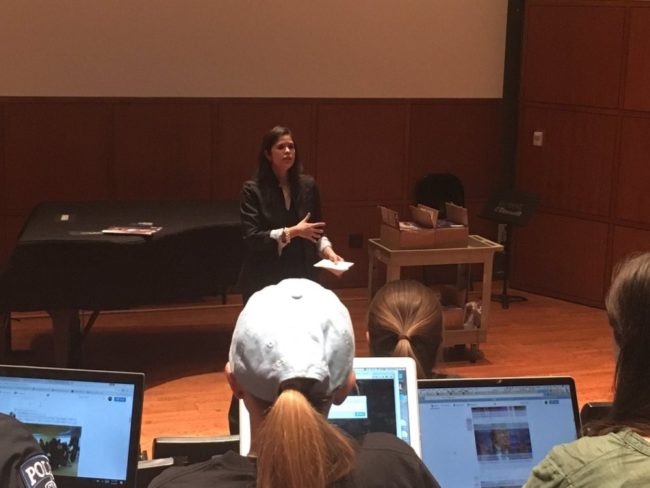“Alison, why are you so effing earnest?”
Alison Overholt, the current editor-in-chief of ESPN The Magazine and espnW, says she was frequently criticized in editorial meetings for her earnestness, but it ultimately led her to the success she has today.

At the annual O’Neil Lecture in Business Journalism on April 4, Overholt walked the audience through her career and the attributes that she values.
@alisonoverholt speaking with us today @SMU. Editor-in-Chief @espnW #oneilsmu pic.twitter.com/IMR6bprS38
— Camden Moore (@camden_moore) April 4, 2017
While working for Fast Company in the early 2000s, Overholt says her persistence paid off. The rest of the writers at the company had given up on a profile piece of Starbucks’ then-CEO, Howard Schultz. But, Overholt said, “I am nothing if not persistent.”
Eventually, she got that interview.
She said, “The umbrella question that drives me every day… is trying to answer the question, ‘What can you do that no one else can do?’”
Beyond her interview with Scultz, Overholt showed her persistence to Fast Company itself. She said she called the founder every day to wear him down. “It didn’t work,” she said, “but I found other ways in.”
The Harvard graduate studied government in the late ‘90s. So how did she end up at the helm of a sports magazine?
Her undergraduate experience gave her strong research skills, she said. From there, she learned how to “do her homework.”
When she came to ESPN in 2005, she was originally hired as a business and technology reporter, “but that didn’t happen,” Overholt said.
“I went home every night to study football positions,” she said. Overholt, who grew up in Hong Kong, wasn’t familiar with the sport.
With her fellow editors criticizing her earnestness, Overholt had something to prove. She made her big break by leading the magazine’s investigation into concussions in the NFL.
Overholt saw the culture at ESPN change: starting as the “smartest, funniest guys in the room,” who were marketing to 18-year-olds in their dorm rooms.
“One of the things that gives ESPN its credibility is when we double down on serious journalism,” she said.
With her investigations, “nerdy girl from Harvard is relevant. Nerdy girl from Harvard has something to contribute,” she said.
After her stint as a deputy editor, she left to work in freelance and started her own consulting group, 183INK.
“The best point of my career was to leave,” Overholt said. “All of these other things were what I needed to experience to make me a leader and make me valuable.”
In 2014, she returned to ESPN as editor-in-chief of espnW and joined ESPN The Magazine in 2016.
While heading the magazine, she has faced unique difficulties. She said ESPN as a network identifies as being “live in a world that is on demand,” believing in the power of watching sports live.
So how does this strategy lead to a physical, static print edition? Overholt said that sometimes, a magazine can be “the best screen possible,” over a TV or phone. Not being live enables the magazine to hold on to stories and polish them, while instant news can lend itself to more shallow work.
.@alisonoverholt believes creative covers can set magazines apart from other media platforms #oneilsmu pic.twitter.com/9x5QJhDtR1
— Jacqueline_Francis (@Jkfrancis_) April 4, 2017
Something no other form of media has: covers. In creating enticing magazine covers, Overholt said that this can make the magazine “feel live.” Overholt’s best examples are the recent entertainment issue covers, featuring Chance the Rapper, actress Leslie Jones, Bulls player Jimmy Butler and Knicks player Kristaps Porzingis.
For the future, Alison Overholt is looking forward to the magazine’s béisbol edition, which will examine the intersection of baseball and Latino culture.









